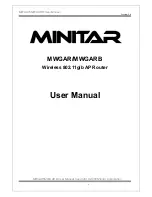
S42
Hardware User Guide
1VV0301303 Rev. 11
Page 18 of 85
2021-05-06
Not Subject to NDA
3.3.1.2.
Serial Interface for UICP Power Management
A substantially saving of power during idle phases can be achieved (see 5.5.1) when the
UICP protocol is used (refer to
). This protocol should be implemented on the host side
as well. Signals IUR-IN# and IUR-OUT# should be connected to the host and may be
mapped, if connected to a standard RS232 COM port, to DSR and DTR (see Figure 10).
Using UICP reduces the supply current from the mA range to the µA range in idle phases
which are normally the highest percentage of the use time, depending on the use case
scenario. This comes at the cost of 2 additional I/O lines, whereas 1 I/O line has been
saved by not switching the module power on/off. Therefore, only 1 additional I/O line is
required to make the power management much smarter and reliable.
Further advantages compared to SYSTEMOFF
•
The Module can maintain volatile configuration while in power down state
•
The Module can be visible and connectable (advertisements enabled) while in
power down state
•
The Module can be connected (BT connected, no data exchange) while in power
down state
There are 2 signals changing functionality depending on the UICP state.
•
IUC_OUT#/RTS# and IUC_IN#/CTS# become RTS#/CTS# after wake-up
•
IUC_OUT#/RTS# and IUC_IN#/CTS# become IUC_OUT#/IUC_IN# after power-
down
Please refer to the UICP specification
for detailed information.
UART-TXD
GND
UART-RXD
IUC_IN# / CTS#
UART-RXD
UART-TXD
B
lu
eM
o
d
+
Sx
H
o
st
RTS# / IUC_OUT#
CTS# / IUC_IN#
IUC_OUT# / RTS#
IUR_OUT#
IUR_IN#
IUR_OUT#
IUR_IN#
Figure 6: UART Interface with UICP Signals 7-wire (incl. GND)
















































